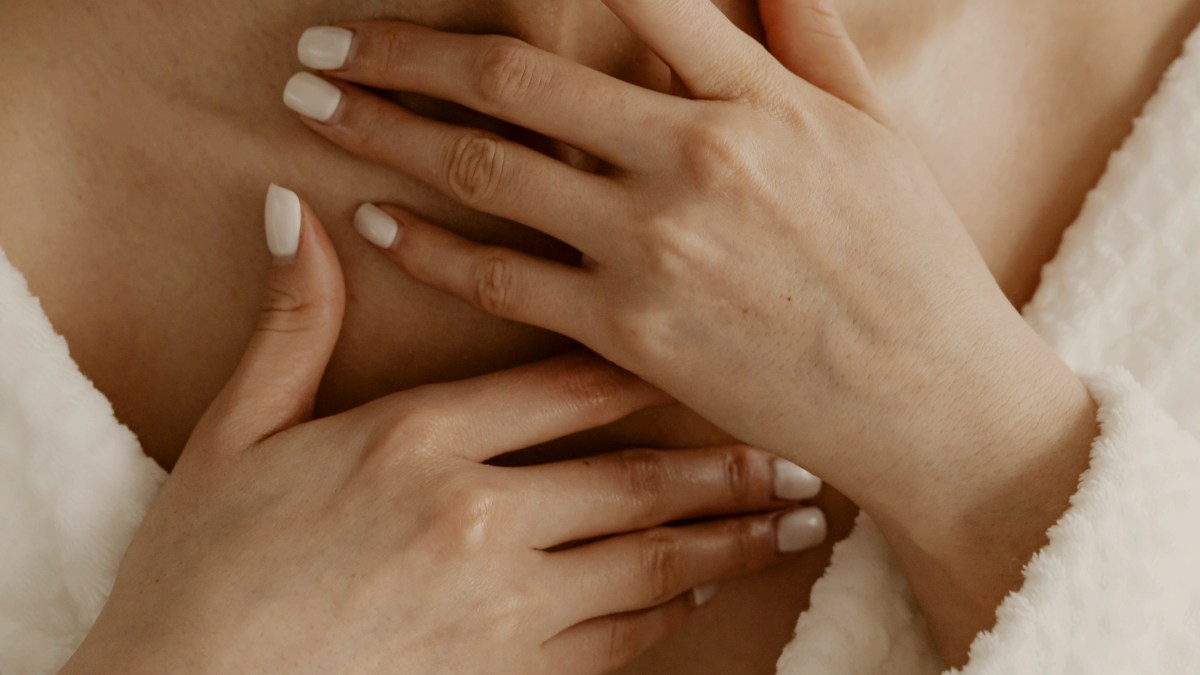
5 'Micro-Movements' For Self-Soothing In Public Places
Nothing's worse than not knowing how to calm yourself down in public places. Thankfully, these five 'micro-movements' can make self-soothing much easier.

By Mark Travers, Ph.D. | January 14, 2025
Stress doesn't play by the rules. It doesn't wait for the solitude of your bedroom, the peaceful ambience of a yoga studio or the soothing background music of a meditation app. It can hit you anywhere—during a high-stakes meeting, in a crowded subway car or in the middle of a bustling café. And when it does, finding a moment of calm can feel downright impossible, especially when the last thing you want is to draw attention to yourself.
That's where stealthy techniques shine. These subtle, intentional actions are a lifeline in stressful moments, offering a way to soothe your nervous system without so much as raising an eyebrow from those around you. They work by engaging your body in ways that gently signal to your brain: "You're safe. It's okay to relax."
What makes these strategies especially powerful is their practicality and accessibility. They don't require a quiet space, special equipment or even closing your eyes. Instead, they fit seamlessly into your daily life, empowering you to take charge of your stress no matter where you are.
Whether you're dealing with performance anxiety, sensory overwhelm or a surge of nervous energy, these discrete methods can help you reset and regain your sense of calm.
Here are five simple, yet effective, ways to feel centered when you're out in the world, armed only with the power of your body and mind.
1. Palm Tracing
When anxiety takes over, your thoughts can feel scattered, making it difficult to focus on anything but the overwhelm. Palm tracing is a grounding technique that helps anchor your mind to the present moment by engaging your senses. It combines touch, movement and breathwork—the most accessible tools to calm the nervous system, as per research—in a way that's soothing yet inconspicuous.
To practice, start by placing one hand flat on a surface or holding it steady in front of you. With the index finger of your opposite hand, begin tracing the outline of your fingers. Slowly glide up the side of one finger as you inhale, then trace down the other side as you exhale. Move methodically from finger to finger, maintaining a steady rhythm. Repeat the process as many times as needed.
This technique creates a tactile anchor that pulls your attention away from stressful thoughts and redirects it to the sensation of your skin and the rhythm of your breath. This interplay activates your parasympathetic nervous system, slowing your heart rate, lowering blood pressure and promoting relaxation.
2. Finger Tapping
When your thoughts spiral into negativity or overwhelm, it can feel like you're trapped in an endless loop. Finger tapping, rooted in the practice of Emotional Freedom Techniques (EFT), is a simple, discreet method that acts as a mental reset button, breaking the cycle of overthinking.
To practice, hold one hand steady and using the thumb of that hand, tap the pad of each finger in sequence: index finger, middle finger, ring finger, pinky and back again. Adjust the speed to match your level of stress—slower taps can be calming, while quicker taps may feel more energizing.
The act of tapping provides a powerful sensory distraction that shifts your focus from the stressor to the physical sensations of the movement. It's a form of "bilateral stimulation" that lightly engages both sides of your brain, helping to calm overactive thought patterns.
3. Using Your 'Pressure Points'
Stress often manifests physically, whether it's a tight jaw, clenched fists or a racing heart. Engaging specific pressure points, as suggested by a 2024 study published in Frontiers in Medicine, can help release this built-up tension and signal to your body that it's time to relax.
One effective pressure point is located in the center of your palm. Use the thumb of your opposite hand to press gently but firmly on this spot, holding the pressure for about 10 seconds before releasing. Another option is the fleshy area between your thumb and index finger—press and hold for similar results.
Pressure points, also known as "acupoints," are rooted in traditional Chinese medicine and have been shown to stimulate the body's relaxation response. When activated, these points send signals to the brain to reduce stress hormones, lower your heart rate and calm the nervous system.
4. Subtle Swaying
When you're feeling tense, it's natural to want to move. Subtle swaying provides a quiet way to channel that need while calming your nervous system. This technique mimics the soothing motion of rocking, which is instinctively comforting for humans from infancy.
To practice, gently shift your weight from side to side in your chair if you're seated, allowing your body to find a slow, natural rhythm. If you're standing, sway your body subtly, shifting your weight between your feet. The motion should feel organic and calming, not forced or exaggerated.
Swaying stimulates the vestibular system in your inner ear, which plays a key role in balance and spatial awareness. A 2016 study published in Journal of Clinical and Diagnostic Research found that vestibular stimulation using swings significantly improved anxiety, stress levels, blood pressure and postural stability by day 14. Respiratory rate improved by day 7, and sleep quality, including disturbances, also showed significant improvements. So, this gentle activation can help regulate your sense of safety and stability.
5. Engaging In A 'Self-Hug'
There's a reason hugs feel so comforting—they trigger the release of oxytocin, the hormone associated with connection and stress relief. A "self-hug" can deliver similar benefits, offering a moment of reassurance and grounding when you need it most.
To practice, cross your arms over your chest, as if giving yourself a hug. Rest your hands on your shoulders or upper arms and apply gentle, steady pressure. Hold this position for a few slow breaths, feeling the warmth and weight of your touch.
Research shows that crossing your arms over your body's midline reduces the intensity of pain by altering how the brain processes sensory information. This posture disrupts the brain's ability to localize sensory stimuli, leading to decreased pain perception.
The pressure from a self-hug mimics the sensation of being embraced by someone else, activating the parasympathetic nervous system. This helps reduce the fight-or-flight response to stress and lowers cortisol levels, creating a feeling of safety and comfort.
Each of these techniques is designed to be simple, portable and effective. While these micro-movements may seem small, their impact on your nervous system can be profound, helping you reclaim your calm even in the most chaotic moments.
Are you usually grounded in the present or carried away by stressful thoughts? Take the science-backed Mindful Attention Awareness Scale to find out.
A similar version of this article can also be found on Forbes.com, here.
